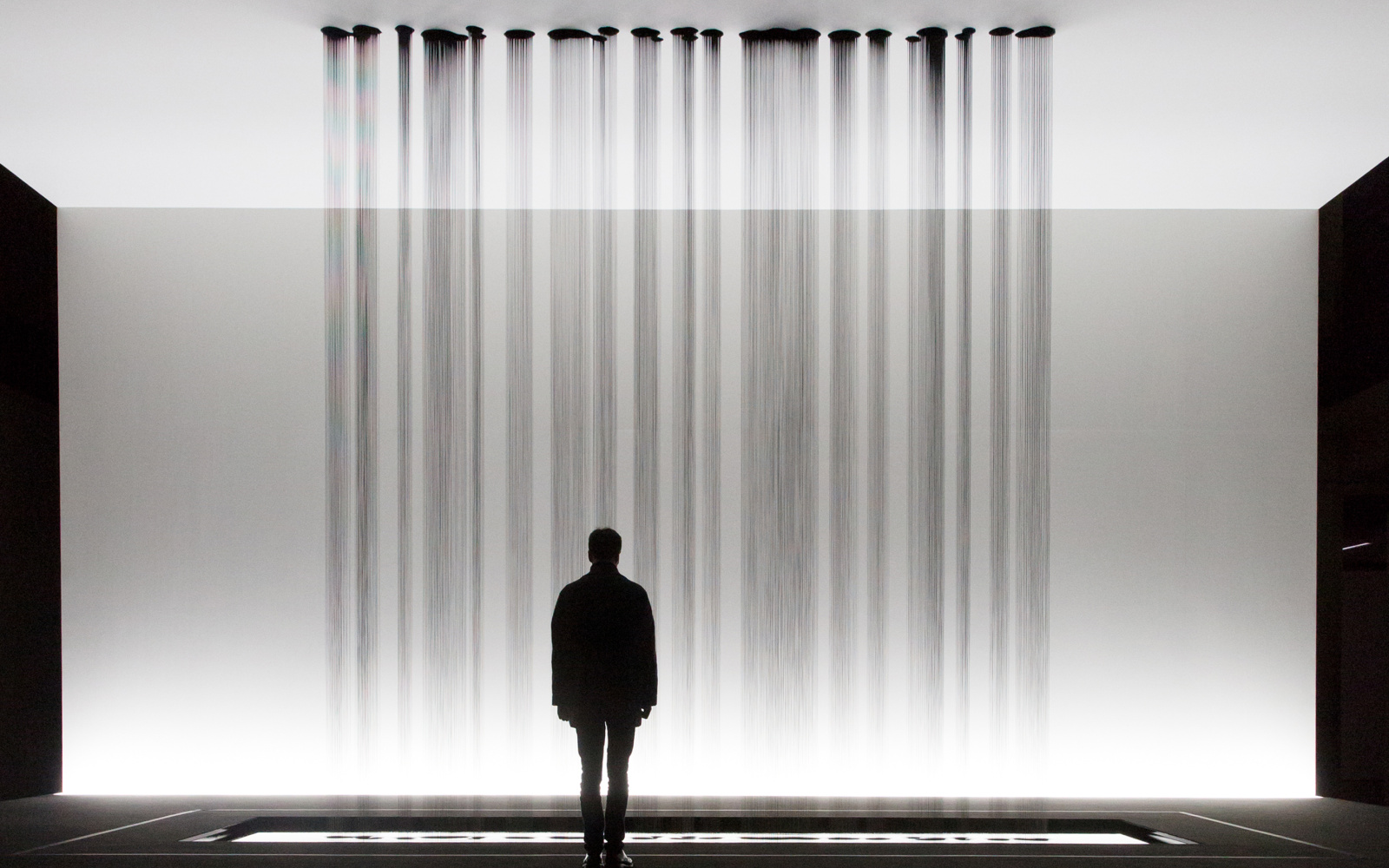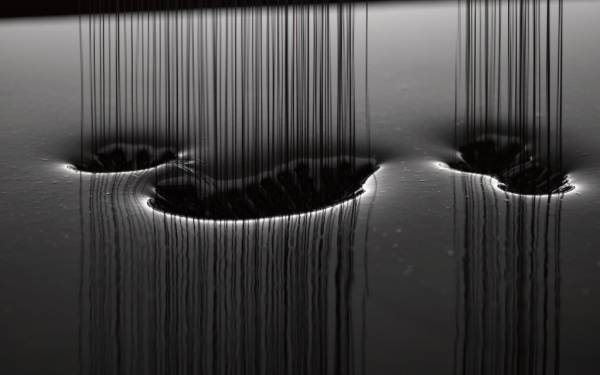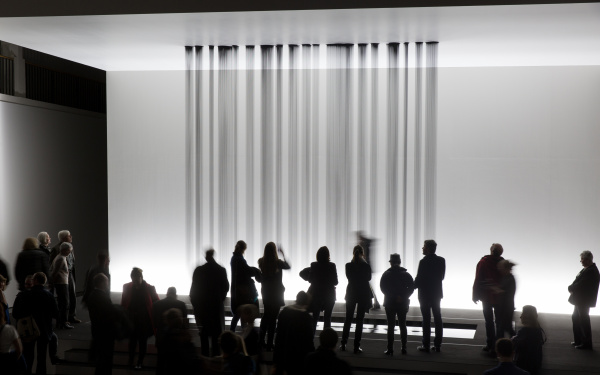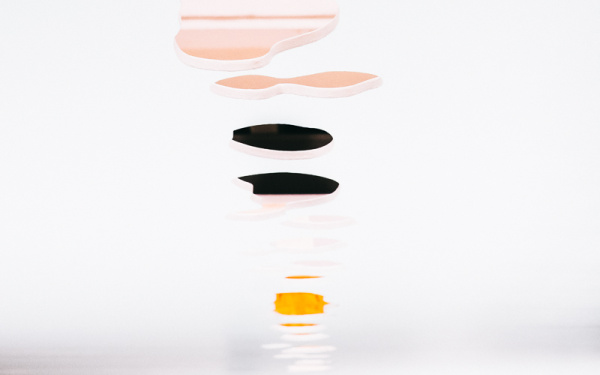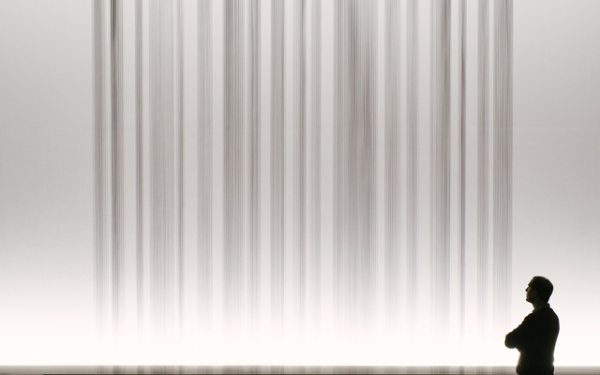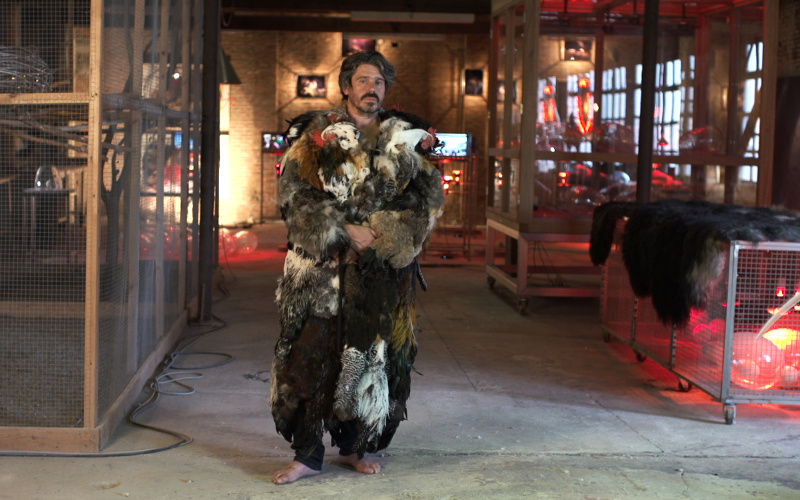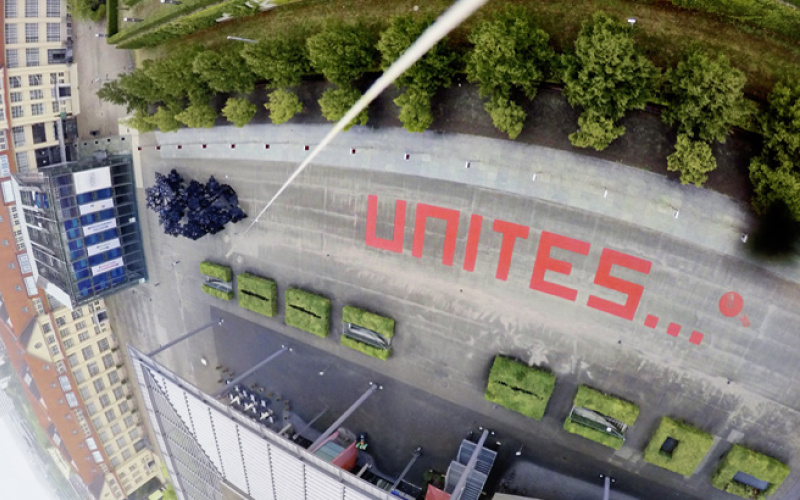Gravity in Slow Motion – »Force« by Kohei Nawa
In his work Force, the Japanese artist Kohei Nawa delves into the topic of gravity and demonstrates which complex tasks this creates for the human sensory system.
BY ANDRÉ WEISS
The installation is a part of the New Sensorium. Exiting from Failures of Modernization exhibition (05.03–04.09.2016). The works on show are predominantly from non-Western, Asian artists who have examined the expansion of our senses made possible by mechanisation and digitalisation.
Is the sombre rain solid or fluid? Is it falling or is it standing still? These questions are difficult to answer just by looking: as an observer, you would dearly love to reach into the black wall to find out whether the black mass which unrelentingly falls from the ceiling has solid or fluid properties. The installation Force by Kohei Nawa makes gravity appear in a new light. It irritates human perception and casts doubt on the impressions amassed. This is reason enough to take a look behind the scenes and examine more closely what exactly is happening there.
– Kohei Nawa
»When I found the silicone oil, I thought this is very good to see the gravity.«
The largest part of the ZKM_Lichthof 2 currently fills a roughly 7.5-metre-high baldachin painted in brilliant white. A gleaming light pours out of a channel on the back wall, which ensures that the mass falling from the ceiling precipitates in a way that is rich in contrast. The mass in question is 1.6 tons of black-pigmented silicon oil that has a special viscosity - this is the unit of measurement for the thickness of a liquid.
Greater technical investment results in a diagram of gravitation
With the help of an Archimedes screw, also known as a spiral screw, the liquid is conveyed from the bottom container into the body of the baldachin. From the distribution container it then falls through a perforated template in the form of a six-metre wide oil curtain back to the ground. In order to ensure that the upper container cannot overflow and the image always remains the same for the observer, sensitive electronics monitor that the pump works steadily.
The oil then pours into a type of pond on the floor, and the liquid's special properties ensure that it does not form any bubbles when doing so. The surface is similar to a mirror and the reflection forms a connection between the ceiling and the floor. This gives rise to a diagram of gravitation which is generally known for the reciprocal attraction between masses.
Here on earth that has the effect that all bodies fall downward - in the solar system on the other hand, that the planets remain in their orbits. Force on the one hand makes gravitation something tangible and comprehensible by illustrating the reciprocal attraction existing between two masses: "When I found the silicone oil, I thought this is very good to see the gravity" (Kohei Nawa). On the other hand, the installation also causes irritation because the common notion that we have of an object falling becomes blurred and then needs to be rethought.
Artistic intention – Locating the body consciousness
The idea of illustrating gravitation is something that the artist and Kyoto-resident Kohei Nawa originally did on a canvas. Within the framework of his series Direction, he created paintings of vertical and parallel lines flowing toward one another by allowing black viscous paint flow over a canvas which had been turned 15 degrees. In the creative process lies the actual message conveyed by the work: the speed and direction taken by the spreading paint dictated by gravity demonstrates the influence of the gravitation, to which the human body is also subject.
Nawa wants to create a consciousness for this physical conditionality, and this is why he makes the act of artistic creation which gave rise to Direction something which can be permanently experienced in the installation Force. The implementation takes things a step further however: this time around, the black mass is not on a canvas, it instead falls freely through the air. This means that it is no longer a painting that is created, but a moving and constantly changing sculpture. A conflict between solid materials and liquids becomes perceivable, within which the human body needs to find itself - but the sculpture does not become tangible and so remains something that cannot find where it's exact place is.
About the author
André Weiss is studying in the Master's program "Science - Media - Communication" at the Karlsruhe Institute of Technology (KIT). As an intern he was active in press and public relations at the ZKM | Center for Art and Media.
Category
News Category
- tracks & records
